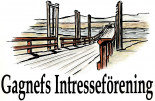Information in English
The Ottilia Adelborg museum
(open during mid june to mid august or by appointment)
The museum has standing exhibitions of lace from Ottilia’s collections, an art exhibition, and a costume room showing traditional Gagnef costumes as they looked when Ottilia arrived in Gagnef and still do on festive occasions in the village. The village dress varies in subtle ways from village to village; here you can learn how to recognize the details that make the differences and how to recognize the changes in how one dressed due to age and marriage – not only in Gagnef, but throughout Dalarna.
The museum also arranges special exhibitions are advertised regularly.
Ring +46 241 151 50. Call +46 241 151 50. Inträde 40:- Admission 40: –
For more information, see www.gagnef.se/culture
Gagnefs Minnesstuga
(open during mid june to mid august or by appointment)
Visit the oldest local homestead museum in Dalarna — started by Ottilia Adelborg. Experience how people lived in Gagnef 100 or more years ago! There are 25 original log buildings dating as far back as the 1600’s and a large collection of wooden and metal hand tools. Several building are still furnished the way they were when they were lived in or used.
Guided tours by appointment for 200:-, otherwise a voluntary donation is requested.
From the museum you also have an unobstructed and unmatched view of the Daläven river valley and the blue mountains in the distance.
The traditional Mid-Summer celebration for Gagnef is celebrated on a large open area just across the road from the museum. The exact date varies, but is the nearest weekend on or after June 22. Traditional dress is very much in evidence during this celebration and all comers are welcome.
Address: Adelborgsvägen in Gagnefs Kyrkby.
Call +46 241 610 12 for tour arrangements or more information
The Gagnef Church
According to tradition, the church, one of the larger rural churches in Sweden, was originally built of wood on a rise about 300m from the current location, perhaps as early as the 9th century. Today’s church was built of granite at its current location late in the 13th century. It has since been rebuilt and expanded several times.
The oldest and finest inventory in the church is the altar that was probably made during 15th century in Lübeck or Schleswig-Holstein in Germany and brought to Sweden as war spoils during the 30 Years War in the first half of the 17th century. The stained-glass windows in the choir were dedicated in 1954 and are beautifully colored pictures around the themes: ”Suffer the little children come unto me and forbid them not” and ”Come unto me all ye who labor and are heavy laden.” A painting by Ottilia Adelborg depicting Saint George and the Dragon hangs over the entrance from the vestry.
The church is very near the river and the entire area offers peace and quiet. It is open daily during the summer months. Regular church services are held each Sunday at 11.11AM (10 AM during the summer) except for certain Sundays during July, when the church service may instead be held in a nearby church in the area. During July the church serves as a “Church by the Wayside” when it is open daily from 11 AM to 4 PM for viewing and coffee service.
Services are Lutheran, but all faiths are welcome. There are often evening concerts on the weekends during summer months as well as occasional concerts at other times of the year.
The Floating Bridge Area
Between the homestead museum and the river lies the “Floating Bridge area”. It is an open area along the river bounded by the road that crosses the Gagnef floating roadway bridge on one end and the spot where the walking path along the river leads up to the open air museum at the top of the ridge. There is a parking area where the road reaches the floating bridge, a summer café, picnic tables, and a steamboat dock. The boat, Lisskulla III, docks here—offering regular tours during the summer to Mellsta in Borlänge for a return fare of 195 crowns per person. A one-way ticket is 100 crowns. Gagnefs älvtrafik (Gagnef’s River Traffic) also accepts private bookings, with a minimum of 2 hours for 1200 crowns per hour.
During July, there are “Floating Bridge evenings” on Wednesdays with music and other “happenings”.
Telephone: 070-640 92 72, 070-318 86 40
Floating Bridges
Sweden’s only remaining floating bridge open to automobile traffic is in Gagnef’s Kyrkby with another similar bridge now only open to foot and bicycle traffic in the adjoining village of Österfors.
In Österfors, one get and idea of how the Kyrkby floating bridge looked in a somewhat earlier incarnation as well as the remains of a canceled construction project to build the “Gråda Canal” started the 1830’s. The government decided not to finish construction (possibly due to the advent of the then “high tech” innovation, the railroad). Many artifacts left when the canal project was abandoned are still visible and the area is easily accessible along a hiking trail.
